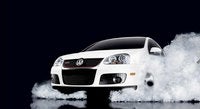Is a small turbocharged engine more fuel efficient above or below the boost threshold?
Asked by nintendoeats Apr 19, 2014 at 01:44 PM about the 2001 Volkswagen Golf GLS 1.8T
Question type: General
I've been trying to figure out more fuel efficient driving techniques, but I don't have an instantaneous mileage display so I need to rely on mechanical knowledge instead. I know that increased compression is more efficient, but of course staying above boost threshold means increased internal friction. So what should I be shooting for?
Thanks!
5 Answers
yetilikesbeer answered 10 years ago
Even a identical car will not run the same as yours. Each vehicle is slightly different and has been exposed to different conditions through out it's life. Your best bet would be to do your own tests and calculate your economy. Do a few runs over the same roads with different engine loading and boost. Use the fuel consumed vs. distance to calculate your mileage. Just try to fill the tank to the same point before each run so the tests are accurate. You should be able to determine where your cars runs the most efficient.
Given that the turbo is designed to force more air into the engine under load (make it think it has more displacement), it also will put more fuel into the engine under load. When running at low boost, under lighter load, the vehicle will use less fuel. This is why the automotive world is producing more smaller engines with twin turbos...it makes good power when needed and better gas mileage when not under heavy loads. So, don't have a lead foot, keep your RPMs down, and get into that tallest gear as soon as possible. Simple techniques that have existed since the first gas crisis in the 70's.
yetilikesbeer answered 10 years ago
@Scott. There are exceptions to your explanation. That is why it is always a good idea to do your own data collection and calculations to determine where your engine runs the most efficient under certain conditions. It's hard to word this. Each motor has an unique torque/power curve and the transmission/final drive gearing will only add to the uncertainty. The engine will be more efficient while operating closer to the peak values. Lugging an engine is the most in efficient way to run it. I'm not saying don't use the tall gear just record some data so you know when and where to use which gear..
yetilikesbeer answered 10 years ago
For example on my W bodies. They have a 3.4 DOHC screamer that likes 4000-5500 for churning out the power. Sadly after '93 they didn't have the 5spd so I'm stuck with the Auto. So this is just info on my motor to try to get my point across. Under low load, flat ground at highway speed 110 km/hr (70 mph) my car is fine in OD and drinks fuel at 23-29 mpg depending on my weight. So lets say empty with me in it at 26. If I hit hilly terrain or increase speed to 120 km/hr it drops to 20 or sub twenties with that speed and a hill. But if I kick it into drive and bump the motor up to 3500 to 4000 I gain 3-5 mpg over OD because I'm not lugging it and using my engines power. And believe it or not my trip to work is 430 km one way, driving the car the same average speeds and passing etc it averages better if I don't use OD at all. But at 380,000 kms on that motor I did not want to maintain that RPM for to long. So long story short each motor is different. Test before assuming.
Agreed, it is good to know the sweet spot of the engine's power and work with that...I had a Vanagon with 2.1L and automatic...would run all day at 4000 rpm and get 18.5 mpg...If I slowed to 55mph (3000rpm) it would only get 16mpg...weird.
